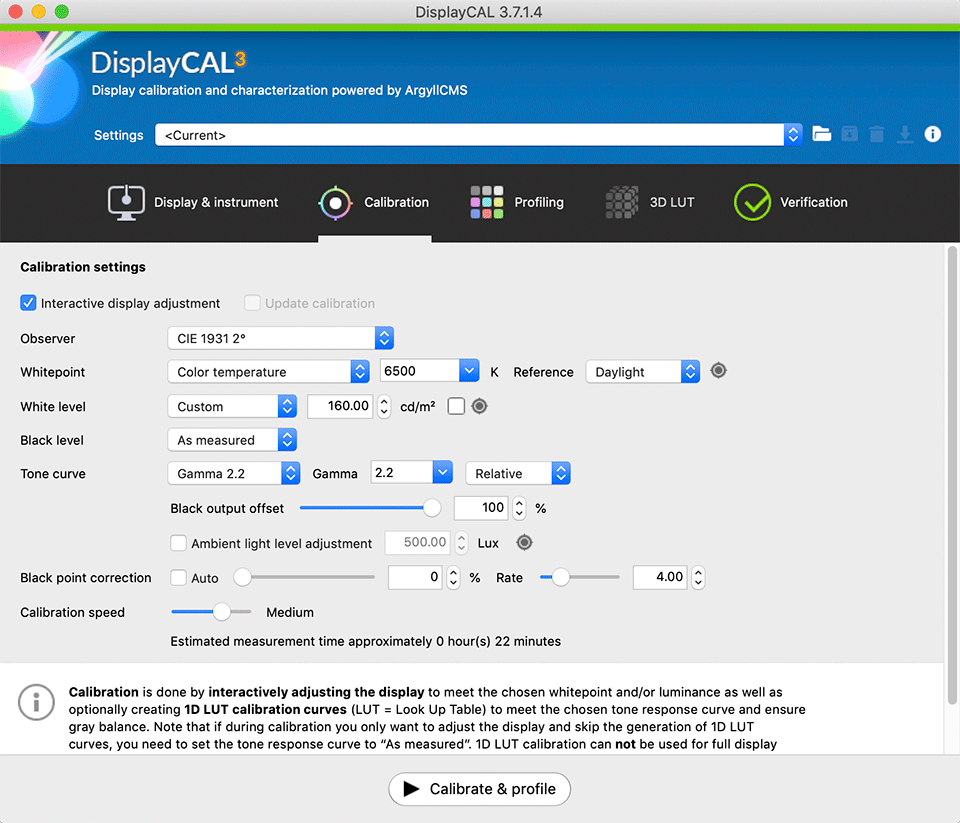

- #DISPLAYCAL CALIBRATION FOR FILM HOW TO#
- #DISPLAYCAL CALIBRATION FOR FILM UPGRADE#
- #DISPLAYCAL CALIBRATION FOR FILM SOFTWARE#
- #DISPLAYCAL CALIBRATION FOR FILM PROFESSIONAL#
- #DISPLAYCAL CALIBRATION FOR FILM SERIES#
The best starting point with most monitors is simply to reset the settings to their factory default. Still, it's important to go through and assess what changes we can make.
#DISPLAYCAL CALIBRATION FOR FILM PROFESSIONAL#
Typically you'll need a professional grade display to gain access to more hardware calibration features, but we're not covering that in this guide. On most consumer or gaming displays, there's not a whole lot we can do to calibrate them by changing settings in the on screen display. The less the ICC profile needs to do, the better results we'll get.
#DISPLAYCAL CALIBRATION FOR FILM SOFTWARE#
But software profiles are a little finicky, they don't work in all applications and this translation process can't necessarily fix all the accuracy problems with your monitor.įor this reason, it's super important that we do as much of the calibration process as possible in the actual hardware of the display.
#DISPLAYCAL CALIBRATION FOR FILM HOW TO#
During the calibration process, we'll be generating an ICC profile, which is essentially a software table that tells your operating system and applications how to translate colors so they appear accurately on your display. We have our calibration hardware, now let's set up the display so it's ready for calibration. Using a spectrophotometer is a tad different though, so if you've splurged on a higher end device, this guide won't be for you.
#DISPLAYCAL CALIBRATION FOR FILM SERIES#
The Spyder series tend to be a bit cheaper though, so it might depend on your budget.įor this guide we'll be using the i1Display Pro, but the principles should apply to other colorimeter models on the market. For just over $200, we think it delivers great value given the specifications. It's accurate, fast, works across a range of display types. Either one will be fine, though if we were to recommend a specific model, we'd choose the X-Rite i1Display Pro. There are several different colorimeter options on the market, the two most popular are the X-Rite i1Display series and the Datacolor Spyder series.
#DISPLAYCAL CALIBRATION FOR FILM UPGRADE#
Later, if you want the higher accuracy and greater capabilities of a spectrophotometer, they are a good upgrade path and it's what we use for our reviews, but we wouldn't recommend them for most people just starting out. In other words, if you're just starting out with calibration and want a basic yet capable tool for your monitors, the best option will be a colorimeter. You can get a very capable colorimeter for around $100 to $200, while spectrophotometers tend to start at over $1,000, putting them out of reach of most non-professional calibrators. Like with any tool, you can get scientific-grade colorimeters and spectrophotometers with price tags in the thousands of dollars, but for entry-level devices, colorimeters are far cheaper. Spectrophotometers are more accurate at handling color readings and are more versatile, but are not as good for lower light measurements, generally speaking.īut for most consumer applications and casual users, the main difference between these devices will be the price. Colorimeters are particularly good at handling a wide range of luminances, so they're great at low light readings and very well suited to contrast measurements.


It's not possible to calibrate a monitor by eye or without any external hardware, you'll need to purchase a color calibration tool to use during the process.įor those with budget monitors this may not make sense as the calibration hardware can be more expensive than the monitor itself, but if you have a high quality display or have multiple displays, a color calibration tool can be a good investment.Ĭalibration tools are generally split into two families: colorimeters, and spectrophotometers. So let's start by talking about the tools, because this is going to be a stumbling block for many people. We don't anticipate any of this will be too technical, provided you have the tools this is a relatively straightforward process. We'll talk about the hardware you need, how to set up your monitor for calibration, and which settings are best to use within the software. This article will detail the method that we use for display calibration in our monitor reviews, albeit a bit simplified in some areas. Calibration will deliver color accuracy, it will correct most problems with how a monitor ships from the factory including white balance, gamma and oversaturation issues, and it can also help when trying to color match two different displays for a consistent experience. Monitor calibration is very important to a creative professional's workflow, but pretty much anyone can benefit from properly adjusting your monitor.


 0 kommentar(er)
0 kommentar(er)
